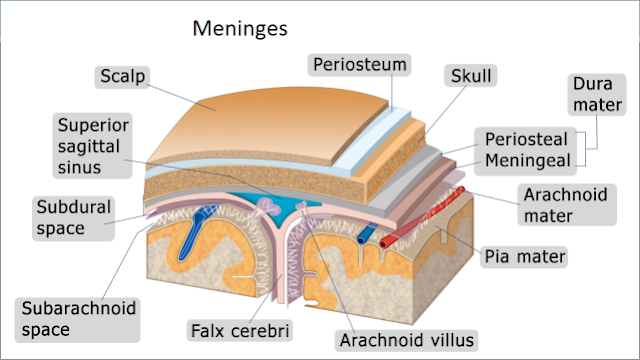21.4 CENTRAL NEURAL SYSTEM NEET (brain)
21.4 CENTRAL NEURAL SYSTEM
The brain is the central information processing organ of our body, and
acts as the ‘command and control system’.
- It controls the voluntary movements, balance of the body, functioning of vital involuntary organs (e.g., lungs, heart, kidneys, etc.), thermoregulation, hunger and thirst, circadian (24-hour) rhythms of our body, activities of several endocrine glands and human behaviour.
- It is also the site for processing of vision, hearing, speech, memory, intelligence, emotions and thoughts.
- The human brain is well protected by the skull.
- Inside the skull, the brain is covered by cranial meninges consisting of-
- an outer layer called dura mater,
- a very thin middle layer called arachnoid and
- an inner layer (which is in contact with the brain tissue) called pia mater.
- The brain can be divided into three major parts: (i) forebrain, (ii) midbrain, and (iii) hindbrain (Figure 21.4).
21.4.1 Forebrain (Proencephalon)
- The forebrain consists of cerebrum, thalamus and hypothalamus (Figure 21.4). Cerebrum forms the major part of the human brain.
- A deep cleft divides the cerebrum longitudinally into two halves, which are termed as the left and right cerebral hemispheres.
- The hemispheres are connected by a tract of nerve fibres called corpus callosum.
- The layer of cells which covers the cerebral hemisphere is called cerebral cortex and is thrown into prominent folds.
- The cerebral cortex is referred to as the grey matter due to its greyish appearance. The neuron cell bodies are concentrated here giving the colour.
- The cerebral cortex contains motor areas, sensory areas and large regions that are neither clearly sensory nor motor in function.
- These regions called as the association areas are responsible for complex functions like intersensory associations, memory and communication.
- Fibres of the tracts are covered with the myelin sheath, which constitute the inner part of cerebral hemisphere.
- They give an opaque white appearance to the layer and, hence, is called the white matter.
- The cerebrum wraps around a structure called thalamus, which is a major coordinating centre for sensory and motor signaling.
- Another very important part of the brain called hypothalamus lies at the base of the thalamus.
- The hypothalamus contains a number of centres which control body temperature, urge for eating and drinking.
- It also contains several groups of neurosecretory cells, which secrete hormones called hypothalamic hormones.
- The inner parts of cerebral hemispheres and a group of associated deep structures like amygdala, hippocampus, etc., form a complex structure called the limbic lobe or limbic system.
- Along with the hypothalamus, it is involved in the regulation of sexual behaviour (libido), expression of emotional reactions (e.g., excitement, pleasure, rage and fear), and motivation.

21.4.2 Midbrain
- The midbrain is located between the thalamus/hypothalamus of the forebrain and pons of the hindbrain.
- A canal called the cerebral aqueduct passess through the midbrain.
- The dorsal portion of the midbrain consists mainly of four round swellings (lobes) called corpora quadrigemina.
- Midbrain and hindbrain form the brain stem.
21.4.3 Hindbrain
- The hindbrain comprises pons, cerebellum and medulla (also called the medulla oblongata).
- Pons consists of fibre tracts that interconnect different regions of the brain.
- Cerebellum has very convoluted surface in order to provide the additional space for many more neurons.
- The arbor vitae: literally meaning the “tree of life” and is the name given to the cerebellar white matter that has a tree-like branching pattern.
- It brings sensory and motor information to and from the cerebellum.
- The medulla of the brain is connected to the spinal cord.
- The medulla contains centres which control respiration, cardiovascular reflexes and gastric secretions.



Very Helpful
ReplyDelete